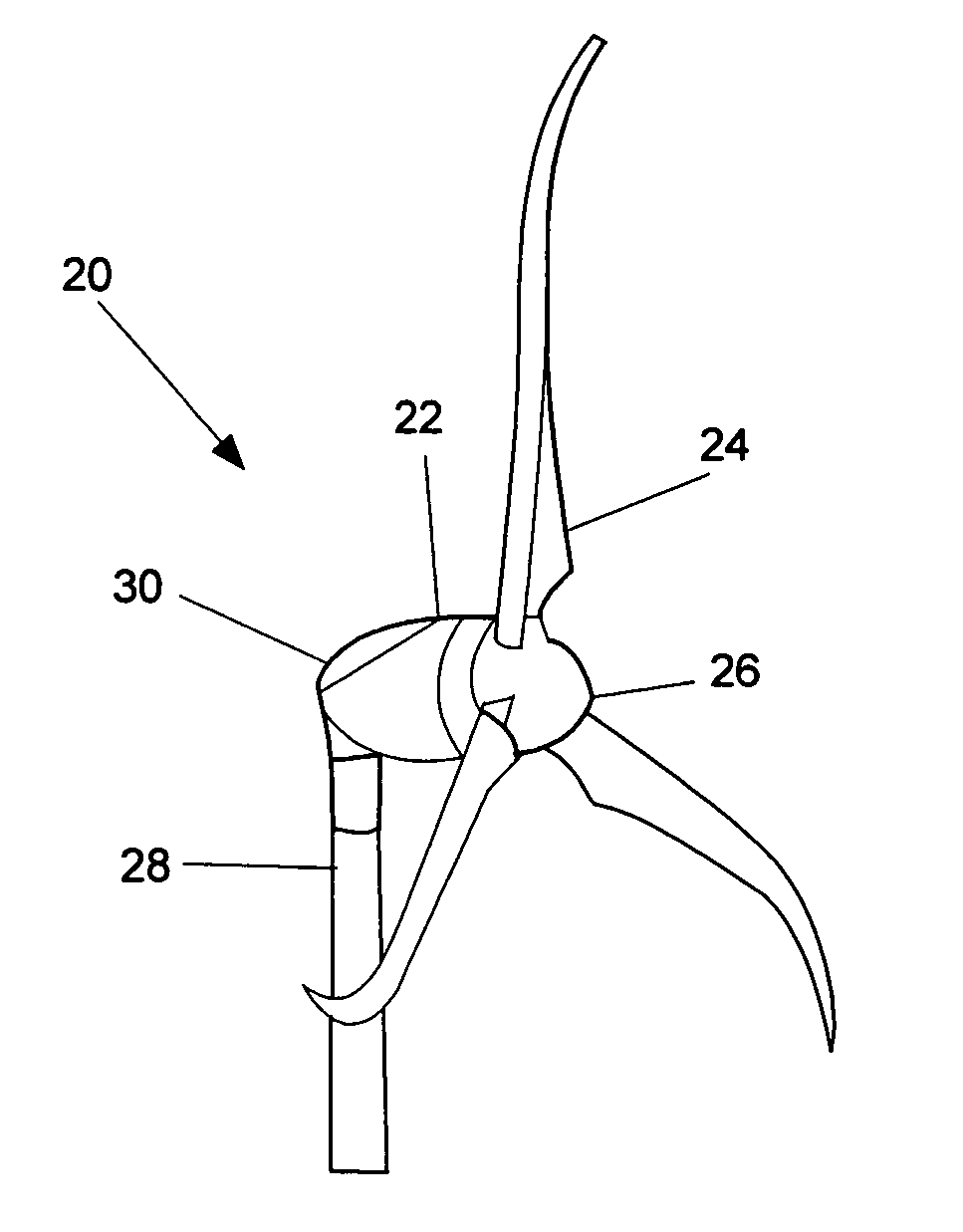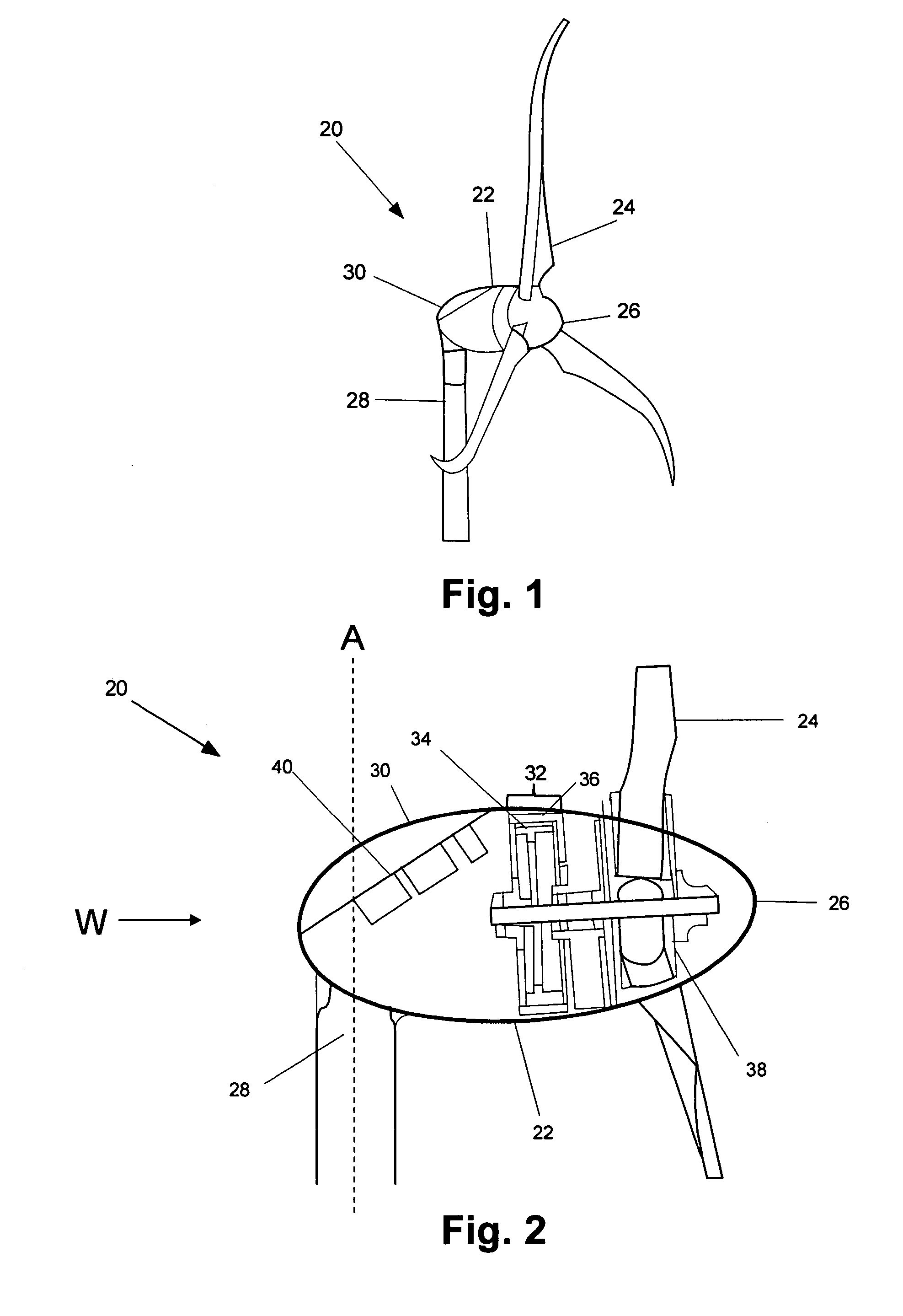Wind turbine and method of manufacture
a technology of wind turbines and wind power, applied in the direction of final product manufacturing, electric generator control, greenhouse gas reduction, etc., can solve the problems of additional losses, use of transformers, etc., and achieve the effects of reducing costs, enhancing heat dissipation, and simplifying the manufacturing and distribution of wind turbines
- Summary
- Abstract
- Description
- Claims
- Application Information
AI Technical Summary
Benefits of technology
Problems solved by technology
Method used
Image
Examples
Embodiment Construction
[0039]FIG. 1 shows an exemplary wind turbine 20 having three blades 24, a housing 22, and attachment to a tower 28, in accordance with an embodiment of the present invention. The embodiment of the wind turbine 20 shown in FIG. 1 is attached to a monopole tower 28. Although three blades are shown in the variation of FIG. 1, different numbers of blades 24 are usable with the present invention. Additionally, many forms of tower arrangements, including tubular towers, guyed towers, and lattice towers, as well as other turbine apparatuses and orientations will work with many aspects of the present invention. The wind turbine 20 shown in FIG. 1 is designed for battery charging or for providing residential grid-connected power. The present invention can be used with virtually any size wind turbine and for a wide range of powering purposes.
[0040] The blades 24 are mounted to a hub 38 (see FIG. 2), which is housed within a nosecone 26 for rotation therewith. The blades 24 may optionally be ...
PUM
 Login to View More
Login to View More Abstract
Description
Claims
Application Information
 Login to View More
Login to View More - R&D
- Intellectual Property
- Life Sciences
- Materials
- Tech Scout
- Unparalleled Data Quality
- Higher Quality Content
- 60% Fewer Hallucinations
Browse by: Latest US Patents, China's latest patents, Technical Efficacy Thesaurus, Application Domain, Technology Topic, Popular Technical Reports.
© 2025 PatSnap. All rights reserved.Legal|Privacy policy|Modern Slavery Act Transparency Statement|Sitemap|About US| Contact US: help@patsnap.com



